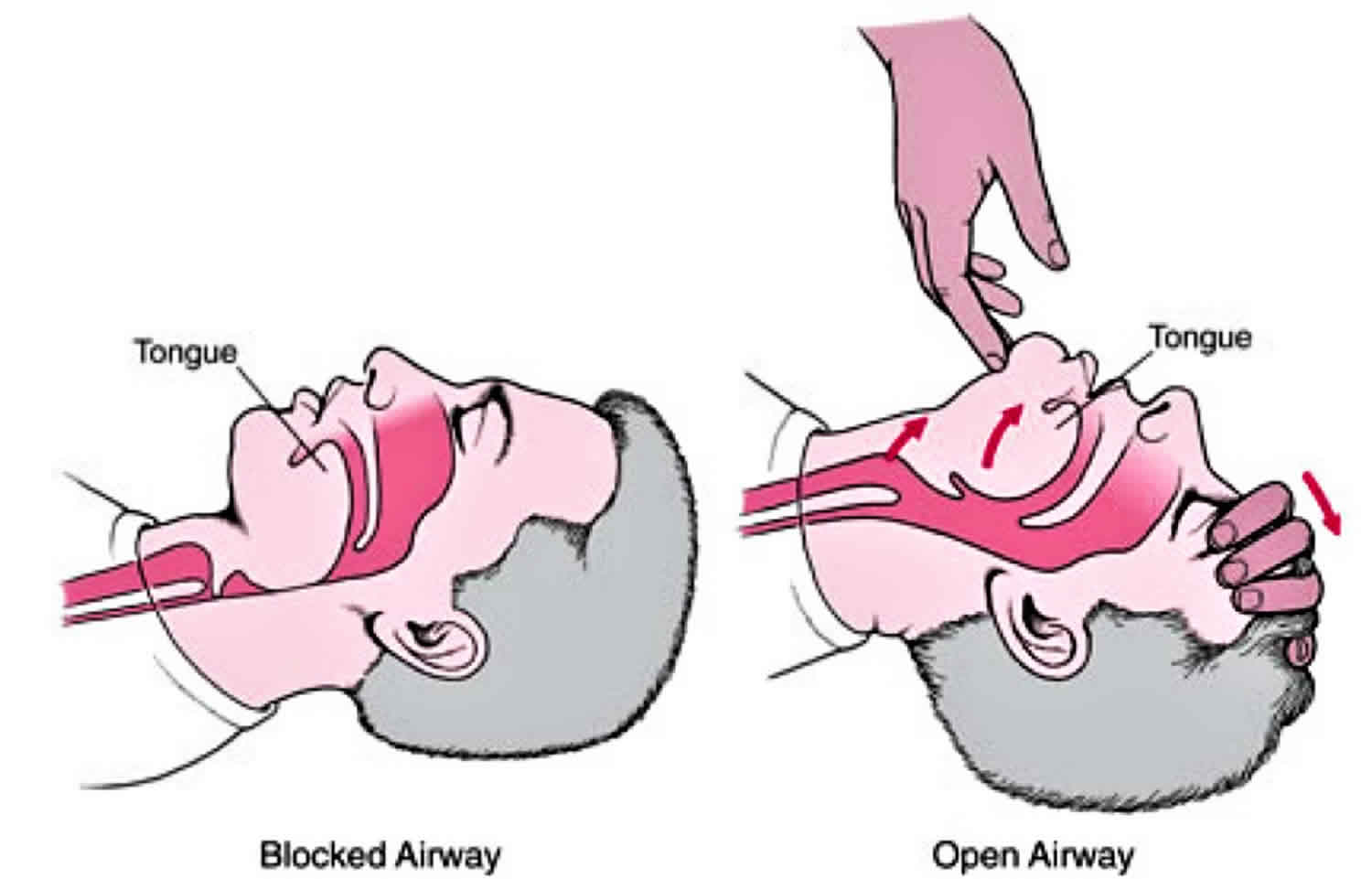Head tilt chin lift
The head-tilt chin-lift maneuver is a procedure used to prevent the tongue obstructing the upper airways, which commonly occurs in an obtunded or unconscious patient. The head-tilt chin-lift maneuver is performed by tilting the head backwards in unconscious patients, often by applying pressure to the forehead and the chin. The head-tilt with chin-lift maneuver is used in any patient in whom cervical spine injury is not a concern and is taught on most first aid courses as the standard way of clearing an airway. The head-tilt with chin-lift maneuver and the jaw-thrust maneuver are two of the main tools of basic airway management.
Tilting the head or otherwise moving the neck is contraindicated in a patient with a possible cervical spine injury, but maintaining an airway and ventilation is a greater priority. In the setting of a possible cervical spine injury, the jaw-thrust maneuver, in which the neck is held in a neutral position, is preferred over the head tilt–chin lift maneuver.
If cervical spine injury is a possibility:
- Position the patient supine or at a slight incline on the stretcher.
- Avoid moving the neck and do the jaw-thrust maneuver first (before trying the head tilt–chin lift if needed to open the airway).
If the patient is in danger of aspirating; he or she should be placed in the recovery position or advanced airway management should be used.
Complications are uncommon and include:
- Spinal cord injury if the cervical spine has an unstable bony or ligamentous injury
- Exacerbation of mandibular injury
Figure 1. Head tilt chin lift
Step-by-step description of head tilt chin lift maneuver
Head tilt–chin lift maneuver
- Kneel next to the patient’s head
- Place one hand on the patient’s forehead and tilt the head gently backward
- Place the tips of your index and middle fingers under the bony part of their chin (not on the soft tissues) and lift the chin vertically upwards. This lifts the tongue away from the posterior pharynx and improves airway patency.
- Take care not to place any pressure on the soft part of the neck as this could obstruct the airway
Be sure to pull up only on the bony parts of the mandible. Pressure to the soft tissues of the neck may obstruct the airway.
Once the airway is opened, you can check for normal breathing. The recovery position (or safe airway position) involves the patient being rolled onto their side in order to maintain an open airway.
Jaw thrust maneuver
Stand at the head of the stretcher and place your palms on the patient’s temples and your fingers under the mandibular rami.
In patients with possible cervical spine injury, avoid extending the neck.
Lift the mandible upward with your fingers, at least until the lower incisors are higher than the upper incisors. This maneuver lifts the tongue along with the mandible, thus relieving upper airway obstruction.
Be sure to pull or push up only on the bony parts of the mandible. Pressure to the soft tissues of the neck may obstruct the airway.





